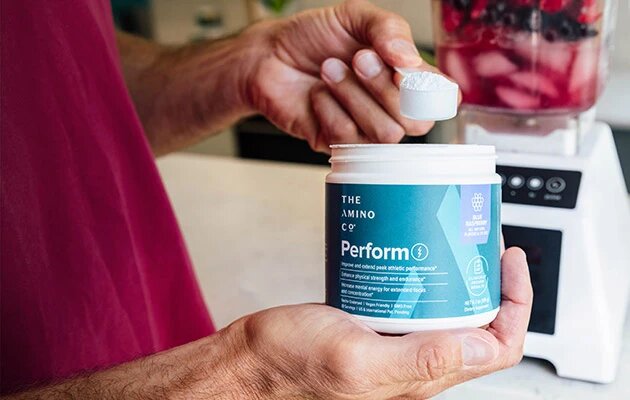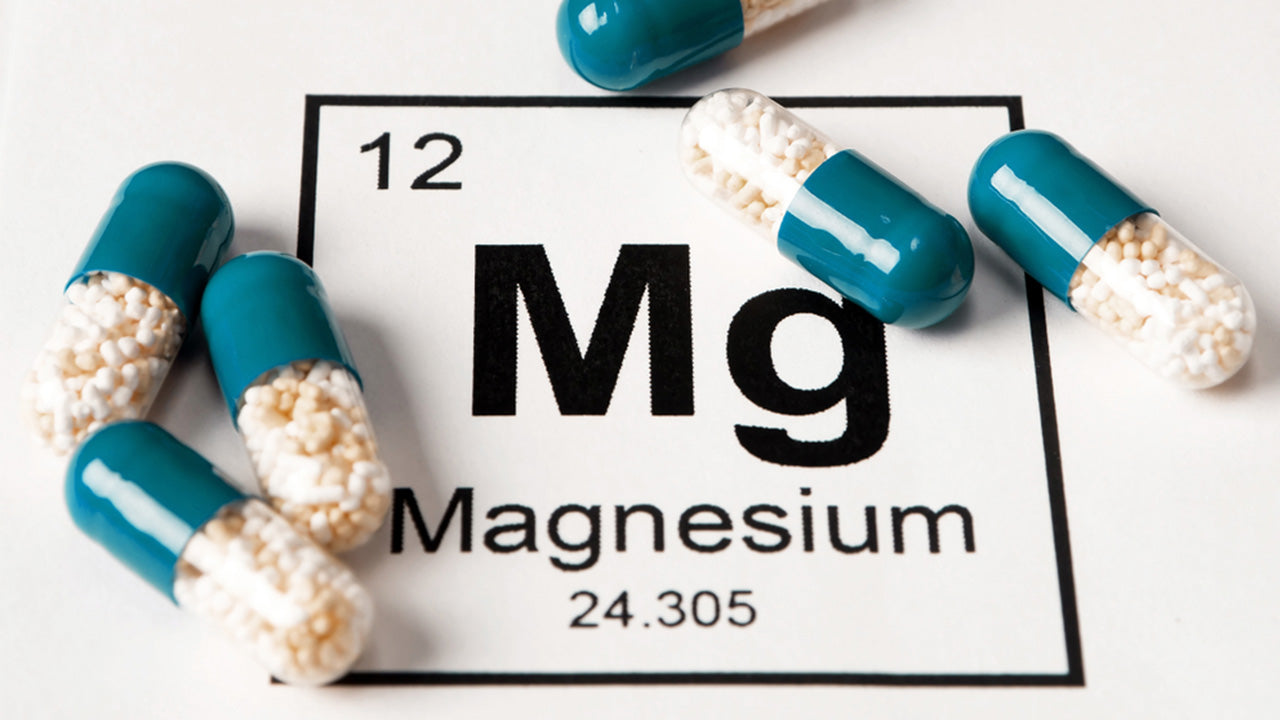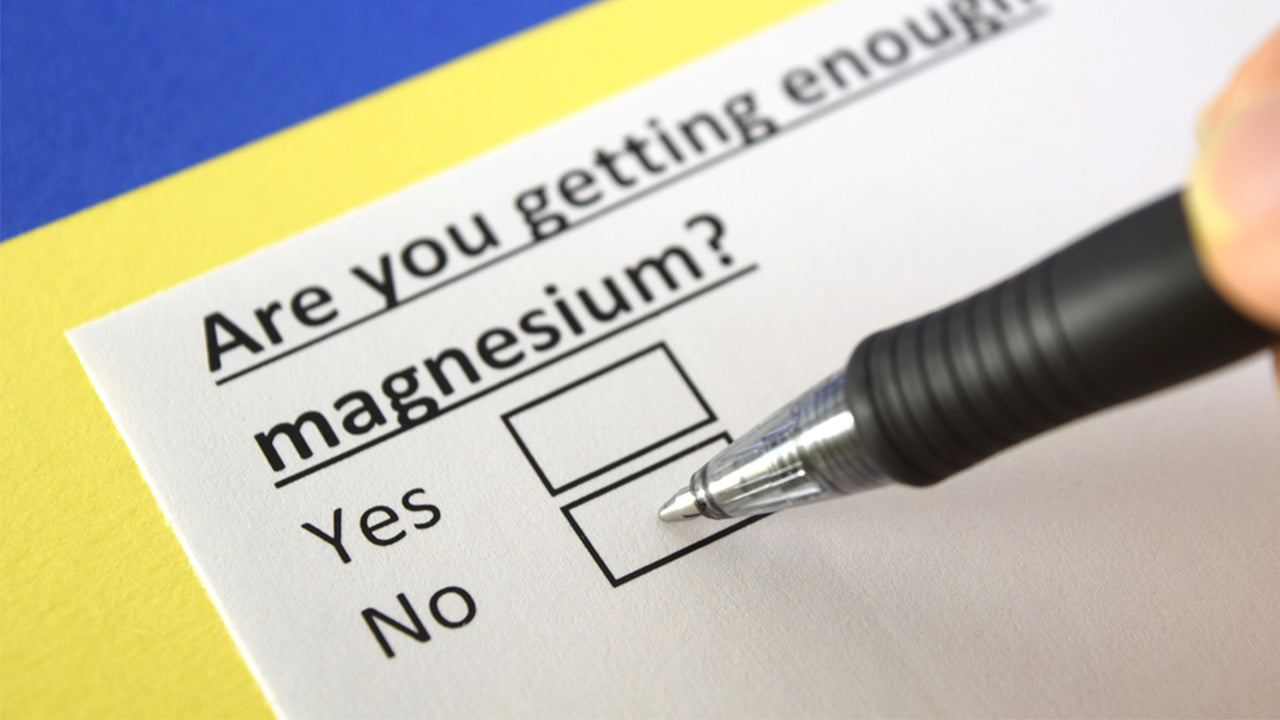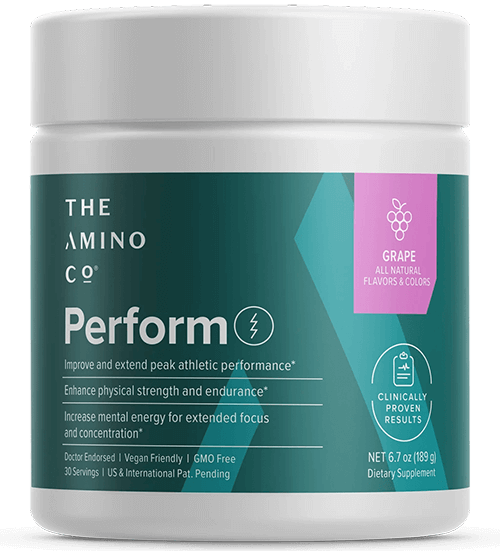Top 10 Foods with Magnesium
 By: by Amino Science
By: by Amino Science

Utilized in hundreds of reactions within the body, magnesium is an important mineral for human functioning. Foods with magnesium are the best way to get the recommended daily intake (RDI) of magnesium, which is 400 milligrams for adults. This article will let you know what magnesium does, what a magnesium deficiency feels like, and which foods high in magnesium will up your magnesium intake to the levels you need to be at optimal health.
Why You Need Magnesium
Magnesium is a co-factor for hundreds of the body's enzyme reactions. These processes include DNA synthesis, bone health, blood sugar balance, blood pressure regulation, muscle contractions, a functioning nervous system, and energy conversion from proteins, carbohydrates, and fats. Magnesium is also thought to impact sleep quality.
Symptoms of Magnesium Deficiency
Luckily, magnesium deficiency is not common in adults who are otherwise healthy. Our kidneys store magnesium for use in short-term magnesium lows, but during a long-term low intake of magnesium, it is possible to become deficient.
The most notable sign of inadequate magnesium levels is a dip in energy, but because magnesium has a hand in regulating calcium, vitamin D, and hormonal balance, low magnesium levels can lead to eye tics, anxiety, insomnia, muscle cramps, and fatigue. Here is a list of common symptoms of magnesium deficiency.
- Fatigue
- Weakness
- Loss of appetite
- Nausea
- Vomiting
- Abnormal heart rhythms
- Muscle cramps and contractions
- Numbness and tingling
When magnesium levels are low, you might start craving stimulants like coffee (a desire meant to boost our energy back up), or chocolate, which if it comes in the form of dark chocolate, would actually help, as dark chocolate is one of the foods with noteworthy magnesium content. Read on for more beneficial foods for magnesium deficiency.
Top 10 List of Foods with Magnesium
If you're wondering which foods contain magnesium, you've arrived at your answer. Below are 10 magnesium-rich foods, and the other proven health benefits they can offer you.

1. Dark Chocolate
Not the sweet milk chocolate common around Halloween and Easter, but dark chocolate, which is both delicious and healthy in more ways than one. Dark chocolate is quite rich in magnesium, with 64 milligrams in a 1-ounce serving, or 16% of the recommended daily intake value. Dark chocolate also contains manganese, copper, and iron, plus prebiotic content, valuable for feeding your healthy gut bacteria.
The benefits don't stop: dark chocolate is also full of antioxidants, nutrients that protect against the damage caused by free radicals in the body. The flavanols in dark chocolate contribute to heart health. These antioxidants help prevent harmful LDL cholesterol from sticking to the linings of your arteries. Make sure the dark chocolate you get is at least 70% cocoa solids. The higher the percentage, the more benefits you'll gain.
2. Tofu
Well known as a staple of vegan and vegetarian diets thanks to its high protein content, tofu is a soy product, a bean curd made by pressing soybean milk into curd form. A serving of 100 grams of tofu contains 53 milligrams of magnesium, which is 13% of the recommended daily intake. That same serving size will bring you 10 grams of protein, as well as at least 10% of the RDI for manganese, iron, and selenium. Tofu is also among foods with high magnesium and calcium content.
Studies link eating tofu with a reduction of stomach cancer risk factors and improved health of your artery linings. Tofu is a top magnesium contender and one of the best sources for plant-based protein.
3. Avocados
The avocado has had a renaissance in recent years, acknowledged for being the incredibly nutritious superfood that it is. Avocados are stone fruits, tasty sources of healthy fats and magnesium, providing 58 milligrams for every medium avocado, 15% of the recommended daily intake.
It doesn't stop there, avocados are especially heart healthy because they are high in both magnesium and potassium; not to mention, B vitamins and vitamin K. Avocados have valuable fiber for comfortable digestion, with 13 out of the 17 grams of carbs in the common avocado coming from fiber. Studies have found that eating avocados can improve cholesterol levels, reduce inflammation, and provide increased feelings of satiety after a meal.
4. Whole Grains
Whole grains like whole wheat, brown rice, oats, and barley, plus pseudocereals like quinoa and buckwheat are all sources of dietary magnesium, as well as various other nutrients. A 1-ounce serving of buckwheat for example has 65 milligrams of magnesium, 16% of the recommended daily intake.
Whole grains also tend to be high in B vitamins, manganese, fiber, and selenium, and have been shown to reduce unnecessary inflammation, which can then lend itself to a decreased risk of heart disease. Buckwheat and quinoa are also significantly higher in antioxidants and protein than traditional grain like corn, and they are gluten-free, so a great resource for those with celiac disease or a sensitivity to gluten.
5. Nuts
Nuts particularly high in magnesium include cashews, almonds, and Brazil nuts. A 1-ounce serving of cashews delivers 82 milligrams of magnesium, or 20% of the recommended daily intake. Nuts are also excellent sources of monounsaturated fat and fiber, making them good for regulating cholesterol levels and blood sugar for those with type 2 diabetes. Brazil nuts are high in selenium, providing over 100% of the recommended daily intake with just two nuts, but most nuts are equipped with anti-inflammatory properties and are beneficial for heart health.
6. Seeds
The majority of people in the modern world are not eating enough seeds. Whether it's flaxseeds, pumpkin seeds, chia seeds, or sunflower seeds, most seeds contain high levels of magnesium. Pumpkin seeds have an especially high amount of magnesium compared to other seeds, with 150 milligrams per 1-ounce serving, a remarkable 37% of the recommended daily intake.
Seeds are also rich in omega-3 fatty acids, monounsaturated fat, and iron, as well as high in dietary fiber. With antioxidants to protect against free radicals, flaxseeds specifically have been shown to reduce cholesterol and have been linked to breast cancer prevention. These tiny powerhouses of nutrients are easy to quickly add to your diet with trail mixes, smoothies, and overnight oat recipes.
7. Legumes
Legumes include chickpeas, kidney beans, lentils, peas, and soybeans. Not only do they contain magnesium (like black beans, which have 120 milligrams of magnesium per cooked cup, or 30% of the recommended daily intake), but legumes also provide a major plant-based food source of protein.
High in iron and potassium, both good for blood and heart health, legumes help decrease the risk of heart disease and improve blood sugar control when eaten regularly. Legumes also contain high amounts of fiber and have a low glycemic index number, making them a beneficial food for diabetics. Another legume resource: natto, a fermented soybean product that can provide you with vitamin K, valuable for bone health.
8. Bananas
Well known as a source of potassium, the banana is a popular fruit worldwide that can help reduce the risk of heart disease, and lower blood pressure. Bananas are also rich in magnesium, with one large banana containing as much as 37 milligrams, 9% of the recommended daily intake.
With vitamin C, manganese, fiber, and vitamin B6, bananas are nutritionally rich and highly convenient to eat: they come in their own protective peel and can easily be included in delicious treats like peanut butter banana smoothies, or made into a dairy-free version of ice cream if you freeze them.
While fully ripe bananas are higher in sugar and carbs than most other fruits, they are natural sugars, much better for your health than refined sugars. On top of that, a large amount of the carbs in unripe bananas are resistant starch, which doesn't get absorbed and digested and may help lower blood sugar levels by reducing inflammation and promoting gut health.
9. Certain Fatty Fish
Fish have a lean protein content that can't be beat, plus omega-3 fatty acids in certain oily fish like salmon, halibut, and mackerel provide an extra health boon. These fish are also high in magnesium, with half a fillet of salmon (about 178 grams) containing 53 milligrams of magnesium, or 13% of the recommended daily value. Fish are also rich in B vitamins, selenium, and potassium, and a regular intake of fatty fish has been scientifically linked to a decrease in heart disease and other chronic diseases.
10. Leafy Greens
Green, leafy vegetables are highly healthy, full of magnesium, iron, and large amounts of vitamins A, C, and K. Leafy greens include spinach, kale, Swiss chard, turnip greens, collard greens, and mustard greens. A cup of cooked spinach for example contains 157 milligrams of magnesium, a whopping 39% of the recommended daily intake. Moreover, the plant compounds in these leafy greens have been linked with anti-cancer properties and may help prevent DNA and cell damage.
Magnificent Magnesium
These healthful magnesium foods can help those with high blood pressure, diabetes, and high blood sugar. Before trying a magnesium supplement (which should be done under the guidance of health professionals), use these foods with high magnesium to try and get enough magnesium from your dietary sources first. Dietary supplements are important when needed, but nothing quite beats getting all the nutrients you need from a well-balanced diet, including magnesium.
What other nutrients help to prevent diabetes, high blood sugar, and high blood pressure? Essential amino acids! You can protect your heart and muscle health with a supplement made up of an optimized concentration of essential amino acids for heart and muscle health. Learn more here.

Up to 25% off Amino
Shop NowTAGS: food
Join the Community
Comments (0)
Most Craveable Recipes




 833-264-6620
833-264-6620



















